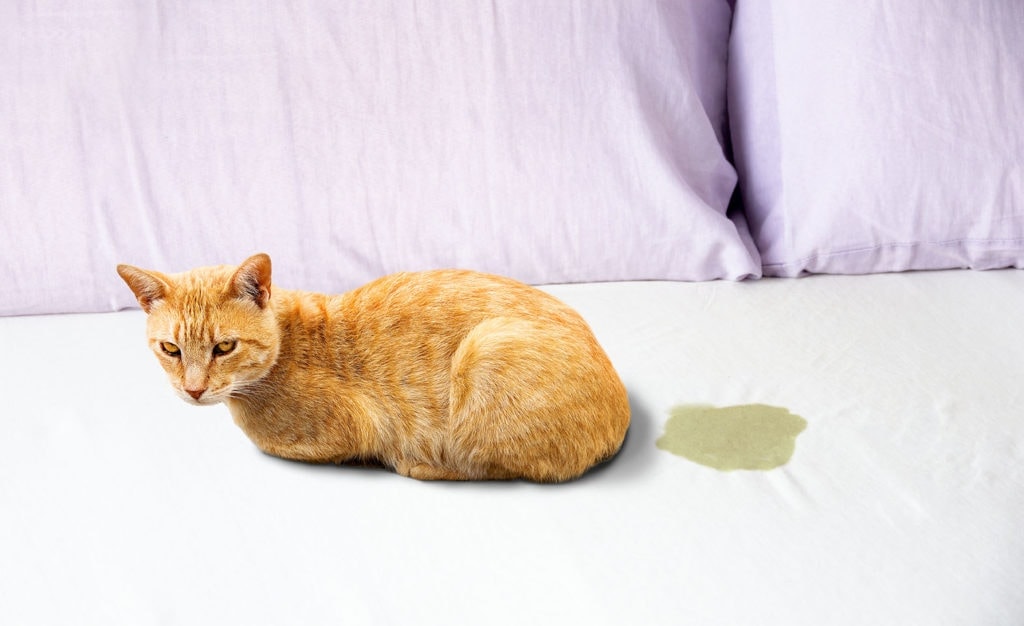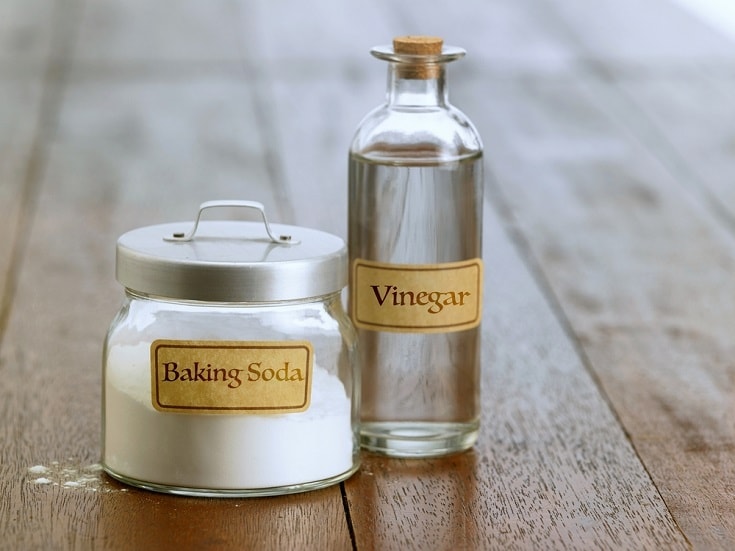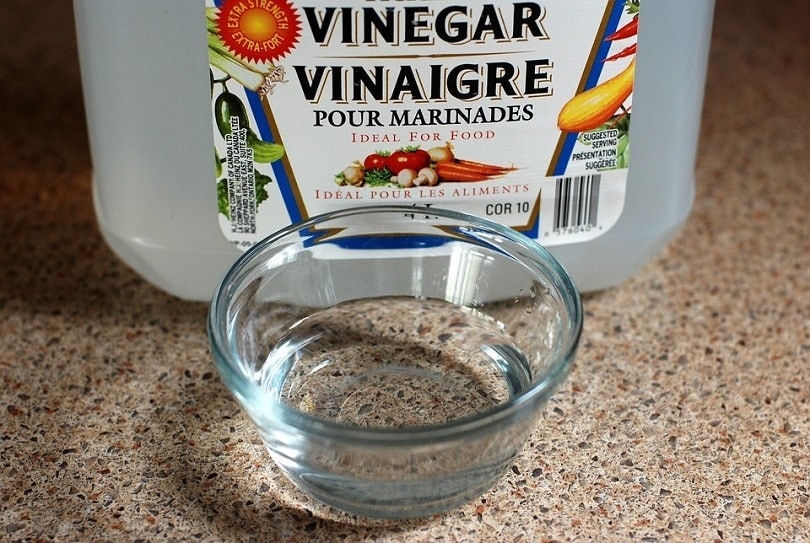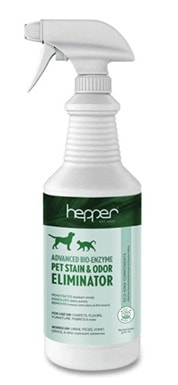How to Get Rid of Old Cat Urine Odor (3 DIY and Homemade Solutions)
-
Pete Ortiz
- Last updated:
Even the most well-trained cat can have an accident, but you need to take action fast when it happens. Leaving cat urine to sit allows bacteria to break down and give off worsening odors. Not to mention, your cat will latch onto even the tiniest scent, urinating in the same spot again and leaving you with a never-ending cleaning chore!
A great enzyme cleaner is your best bet at total odor elimination.
Are you looking for an enzyme cleaner that can keep your house clean and your pet happy? We recommend the Hepper Advanced Bio-Enzyme Pet Stain & Odor Eliminator Spray, which permanently gets rid of the most stubborn stains and smells. There’s even a 100% satisfaction guarantee so you can try this cleaner risk-free! Click here to order your first bottle.
At House Grail, we’ve admired Hepper for many years, and decided to take a controlling ownership interest so that we could benefit from the outstanding products of this cool cat company!
But if you don’t want to invest in a cleaning solution, you have other options. Fortunately, there are plenty of household staples you can use in various combinations to tackle the immediate mess. If you need the problem gone for good, here are three ways to make an old cat urine odor removal home remedy.
DIY Cat Urine Odor Removers
Cat urine is particularly pungent because of its high uric acid concentration, which also makes it difficult to remove. Meanwhile, decomposing bacteria produce an ammonia-like odor that gets more intense over time. You end up with a powerful scent and a strong bond that’s hard to break, especially when it gets into carpet or upholstery fibers.
The key to removing the smell is breaking that bond and neutralizing the odor. With some standard household cleaners — vinegar, baking soda, hydrogen peroxide, club soda, and dish soap — you can whip up several solutions in a few seconds.

How to Get Rid of Old Cat Urine Odor (3 DIY Homemade Solutions)
1. Hydrogen Peroxide, Baking Soda, and Dish Soap

- Hydrogen peroxide
- Dish soap
- Spray bottle
- Baking soda
Hydrogen peroxide is excellent at killing odor-causing bacteria, and when mixed with dish soap, it makes an effective DIY odor eliminator. Peroxide can discolor certain materials, so you’ll need to spot-test the solution in an inconspicuous area before trying it on the stain.
Fill a spray bottle with hydrogen peroxide and add a few drops of dish soap. Mix it gently and spray it over the old cat urine spot. Use a cloth to work it deep in the carpet or fabric. Follow up with a damp cloth to rinse out the cleaner.
Sprinkle baking soda after cleaning the spot to dry up the moisture and remove lingering odors. After 3–4 hours, it should be dry enough to vacuum up.
2. Vinegar and Water

- Distilled white or apple cider vinegar
- Water
- Spray bottle
- Microfiber cloth
When the uric acid in cat urine dries, it becomes alkaline, meaning it has a high pH. White vinegar and apple cider vinegar are acidic, with a pH of 2-3. When sprayed on a urine stain, vinegar neutralizes the uric acid and makes the urine easier to remove.
Mix one part vinegar with one part water in a spray bottle. Spray a liberal amount on the stain and let it soak for 5–10 minutes. Blot the spot with a towel and repeat as necessary until the stain is gone. And don’t worry about the vinegar smell—it’ll go away when it evaporates.
3. Club Soda

- Club soda
- Sponge
- Baking soda
If you’re still having odor problems in your carpet or upholstery, you can try a club soda scrub to get the rest of the stink out. Pour some club soda on the stained area and blot it out of the carpet when it stops fizzing. Let it dry and follow up by sprinkling baking soda to extract any remaining odors. Allow the baking soda to sit for about 30 minutes before vacuuming it up.
What Should You Not Use to Remove Cat Urine Odor?
Cat urine contains ammonia, which limits the viable cleaning solutions you can use on it. To start, you should not use an ammonia-based cleaner on it, as that could make the problem worse. Avoid using a chlorine-based cleaner like bleach as well, as chlorine mixed with ammonia creates chloramine gas, a toxic substance that can irritate the face and throat and damage your lungs.
Be careful with mixing DIY cleaning solutions as well. While they’re safe on their own, mixing vinegar and hydrogen peroxide creates a corrosive liquid called peracetic acid, which can be highly irritating to the skin, eyes, and lungs.
How to Find Old Cat Urine Spots
Cat urine is easy to smell but hard to pinpoint in many cases. If you can narrow it down to a specific room, check the following spots for stains or strong urine odor:
- Planters
- Carpet/rugs
- Soft upholstered furniture
- Bedding and linens
If you still have trouble finding the source of old cat urine odor, you can use a UV black light to root it out. The phosphorus in urine makes it glow a yellowish-green. Make your room as dark as possible and slowly sweep the light over the room until you find the urine spot.
Bear in mind that this technique only works on dry cat urine. Fresh urine can be faint and hard to see. You may also come across several other stains under the black light as you look around, so don’t assume that the first glowing mark you find is the source of the smell.
How Do You Keep Your Cat From Peeing Outside the Litter Box?
If your cat starts to stray outside the litter box to do its business, the first step in correcting the issue is to talk to your veterinarian. Your cat may be sick, and this is their way of indicating they are having problems. The vet can check for common issues like urinary tract infections or to see if there is a more severe illness.
Your cat may also be picky about their litter box. Make sure you keep the litter box as clean as possible, trying new litter to see if they have a preference. Gradually mix in the new kitty litter with the old to slowly transition them to the new brand.
Another possible reason for elimination outside the box is that your cat is stressed out. New pets and children often excite cats, so you may need to take extra steps to make them feel safe. Creating a safe space or buying new hangout spots like a cat tree can help your cat cope and hopefully correct the behavior.
Final Thoughts
It doesn’t take much for a minor accident to become a big headache. Cat urine odor is potent and pervasive, and it can easily overcome many common-sense cleaning approaches. If peeing outside the litter box becomes a recurring issue, it’s crucial to talk with your vet about practical methods to remedy the problem.
When it comes time to clean up, these three effortless approaches to making an old cat urine odor removal home remedy will allow you to breathe easy in no time!
Featured Image Credit: Pixel-Shot, Shutterstock
Contents




